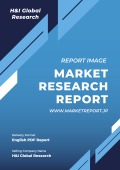Chapter 1. Executive Summary
1.1. Market Snapshot
1.2. Global & Segmental Market Estimates & Forecasts, 2020-2030 (USD Billion)
1.2.1. Fog Computing Market, by Region, 2020-2030 (USD Billion)
1.2.2. Fog Computing Market, by Component, 2020-2030 (USD Billion)
1.2.3. Fog Computing Market, by Application, 2020-2030 (USD Billion)
1.3. Key Trends
1.4. Estimation Methodology
1.5. Research Assumption
Chapter 2. Global Fog Computing Market Definition and Scope
2.1. Objective of the Study
2.2. Market Definition & Scope
2.2.1. Industry Evolution
2.2.2. Scope of the Study
2.3. Years Considered for the Study
2.4. Currency Conversion Rates
Chapter 3. Global Fog Computing Market Dynamics
3.1. Fog Computing Market Impact Analysis (2020-2030)
3.1.1. Market Drivers
3.1.1.1. Increasing demand for connected devices
3.1.1.2. Increasing adoption of cloud applications
3.1.2. Market Challenges
3.1.2.1. Lack of uniform governance standards
3.1.2.2. Lack of awareness about fog computing technology
3.1.3. Market Opportunities
3.1.3.1. Increase in R&D investments
3.1.3.2. Growing communication technology
Chapter 4. Global Fog Computing Market Industry Analysis
4.1. Porter’s 5 Force Model
4.1.1. Bargaining Power of Suppliers
4.1.2. Bargaining Power of Buyers
4.1.3. Threat of New Entrants
4.1.4. Threat of Substitutes
4.1.5. Competitive Rivalry
4.2. Porter’s 5 Force Impact Analysis
4.3. PEST Analysis
4.3.1. Political
4.3.2. Economical
4.3.3. Social
4.3.4. Technological
4.3.5. Environmental
4.3.6. Legal
4.4. Top investment opportunity
4.5. Top winning strategies
4.6. COVID-19 Impact Analysis
4.7. Disruptive Trends
4.8. Industry Expert Perspective
4.9. Analyst Recommendation & Conclusion
Chapter 5. Global Fog Computing Market, by Component
5.1. Market Snapshot
5.2. Global Fog Computing Market by Component, Performance – Potential Analysis
5.3. Global Fog Computing Market Estimates & Forecasts by Component 2020-2030 (USD Billion)
5.4. Fog Computing Market, Sub Segment Analysis
5.4.1. Hardware
5.4.2. Software
Chapter 6. Global Fog Computing Market, by Application
6.1. Market Snapshot
6.2. Global Fog Computing Market by Application, Performance – Potential Analysis
6.3. Global Fog Computing Market Estimates & Forecasts by Application 2020-2030 (USD Billion)
6.4. Fog Computing Market, Sub Segment Analysis
6.4.1. Building Home Automation
6.4.2. Smart Energy
6.4.3. Smart Manufacturing
6.4.4. Transportation Logistics
6.4.5. Connected Health
6.4.6. Security Emergencies
6.4.7. Retail
6.4.8. Others
Chapter 7. Global Fog Computing Market, Regional Analysis
7.1. Top Leading Countries
7.2. Top Emerging Countries
7.3. Fog Computing Market, Regional Market Snapshot
7.4. North America Fog Computing Market
7.4.1. U.S. Fog Computing Market
7.4.1.1. Component breakdown estimates & forecasts, 2020-2030
7.4.1.2. Application breakdown estimates & forecasts, 2020-2030
7.4.2. Canada Fog Computing Market
7.5. Europe Fog Computing Market Snapshot
7.5.1. U.K. Fog Computing Market
7.5.2. Germany Fog Computing Market
7.5.3. France Fog Computing Market
7.5.4. Spain Fog Computing Market
7.5.5. Italy Fog Computing Market
7.5.6. Rest of Europe Fog Computing Market
7.6. Asia-Pacific Fog Computing Market Snapshot
7.6.1. China Fog Computing Market
7.6.2. India Fog Computing Market
7.6.3. Japan Fog Computing Market
7.6.4. Australia Fog Computing Market
7.6.5. South Korea Fog Computing Market
7.6.6. Rest of Asia Pacific Fog Computing Market
7.7. Latin America Fog Computing Market Snapshot
7.7.1. Brazil Fog Computing Market
7.7.2. Mexico Fog Computing Market
7.8. Middle East & Africa Fog Computing Market
7.8.1. Saudi Arabia Fog Computing Market
7.8.2. South Africa Fog Computing Market
7.8.3. Rest of Middle East & Africa Fog Computing Market
Chapter 8. Competitive Intelligence
8.1. Key Company SWOT Analysis
8.1.1. Company 1
8.1.2. Company 2
8.1.3. Company 3
8.2. Top Market Strategies
8.3. Company Profiles
8.3.1. Cisco Systems, Inc.
8.3.1.1. Key Information
8.3.1.2. Overview
8.3.1.3. Financial (Subject to Data Availability)
8.3.1.4. Product Summary
8.3.1.5. Recent Developments
8.3.2. Microsoft Corporation
8.3.3. Arm Limited
8.3.4. Dell Technologies, Inc.
8.3.5. Fujitsu Ltd.
8.3.6. General Electric Company
8.3.7. Nebbiolo Technologies, Inc.
8.3.8. Schneider Electric
8.3.9. Toshiba Corporation
8.3.10. Foghorn Systems private Limited
Chapter 9. Research Process
9.1. Research Process
9.1.1. Data Mining
9.1.2. Analysis
9.1.3. Market Estimation
9.1.4. Validation
9.1.5. Publishing
9.2. Research Attributes
9.3. Research Assumption
*** 免責事項 ***
https://www.globalresearch.co.jp/disclaimer/











